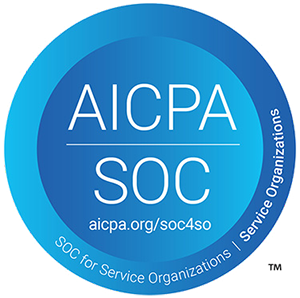Have you ever wondered why some products thrive in the market while others struggle despite their potential? The answer often lies in how well customers understand and utilize these products. A customer education program can bridge this gap, empowering users to harness a product’s full potential. To learn more about crafting effective customer education programs, read our detailed guide: Build Winning Customer Education Programs
What is customer education program?
A customer education program is a structured approach to equipping users with the knowledge and skills needed to maximize the value of a product or service. These programs encompass various training methods, including video tutorials, webinars, articles, and hands-on workshops. By fostering a deeper understanding, customer education programs transform users into confident and loyal advocates for your brand.
Why is customer education essential?
Educated customers are empowered customers. When users fully grasp how to utilize your product, they experience fewer frustrations and achieve their goals more efficiently. This not only enhances their satisfaction but also aligns their success with your company’s objectives. Organizations with strong customer education strategies often witness higher customer retention rates, increased product adoption, and significant cost savings in support operations.
What are the benefits of customer education programs?
1. Reduced Support Inquiries
When customers understand your product, they can resolve minor issues independently. This reduces the volume of support tickets, allowing your team to focus on complex queries. Over time, this leads to cost savings and improved operational efficiency.
2. Increased Product Adoption
Education programs encourage users to explore advanced features of your product, boosting engagement and adoption rates. Certification programs, in particular, have been shown to increase customer confidence and repeat business.
3. Enhanced Customer Satisfaction
A well-informed customer is a happy customer. By providing the tools and knowledge they need, you create a positive experience that fosters loyalty and long-term relationships.
4. Higher Lifetime Value
Educated customers are more likely to continue using your product, recommend it to others, and invest in additional features or services. This directly impacts your bottom line, increasing revenue and market share.
What are the steps for building a winning customer education program?
1. Define Clear Objectives
Before creating a program, determine your goals. Are you aiming to reduce support tickets, enhance product adoption, or improve customer retention? Clear objectives guide your content creation and ensure your program aligns with business outcomes.
2. Understand Your Audience
Identify your customers’ needs, skill levels, and preferred learning styles. Conduct surveys, interviews, or focus groups to gather insights. This research ensures your program resonates with its target audience.
3. Develop High-Quality Content
Create content that is clear, engaging, and actionable. Use a variety of formats—videos, articles, webinars, and interactive modules—to cater to different learning preferences. Break down complex topics into digestible pieces, and ensure the material aligns with your customers goals.
4. Leverage the Right Platforms
Choose delivery platforms that are user-friendly and accessible. Options include Learning Management Systems (LMS), in-app guides, or dedicated customer education portals. Ensure the platform supports interactive and self-paced learning.
5. Incorporate Assessments and Certifications
Include quizzes, assignments, or practical exercises to test understanding. Offering certifications can motivate users, boosting engagement and demonstrating their expertise to peers and employers.
6. Iterate and Scale
Your customer base will evolve, and so should your education program. Continuously update content, incorporate customer feedback, and expand resources to meet growing needs. Scalable programs ensure long-term success.
7. Measure and Optimize
Track key performance indicators (KPIs) such as:
- Course completion rates
- Customer satisfaction scores
- Support ticket reductions
- Product adoption rates
Analyze these metrics to evaluate your program’s effectiveness and identify areas for improvement.
Real-world examples of successful customer education programs
Several companies have demonstrated the power of customer education:
- Salesforce: Their Trailhead platform offers interactive and engaging learning paths for users of all skill levels.
- HubSpot: The HubSpot Academy provides comprehensive certifications, turning users into proficient marketers and sales professionals.
- Adobe: With their Adobe Experience League, customers gain access to detailed tutorials and community-driven resources.
These examples highlight how investing in customer education drives product adoption and builds brand loyalty.
What are the common pitfalls and how to avoid them?
While customer education programs are beneficial, there are challenges to address:
- Overloading Content: Avoid overwhelming users with excessive information. Prioritize clarity and relevance.
- Ignoring Feedback: Regularly collect and act on customer feedback to ensure your program meets their needs.
- Lack of Scalability: Design your program to accommodate a growing customer base without compromising quality.
What is the role of technology in customer education?
Modern technology plays a crucial role in delivering effective customer education. Tools like AI-powered learning platforms, chatbots, and analytics software enable personalized learning experiences and real-time support. Leveraging these tools enhances program efficiency and scalability.
Conclusion
A well-designed customer education program is a strategic asset that empowers users, reduces support costs, and drives business growth. By understanding your audience, creating quality content, and leveraging technology, you can build a program that delivers lasting value.







Leave a Reply